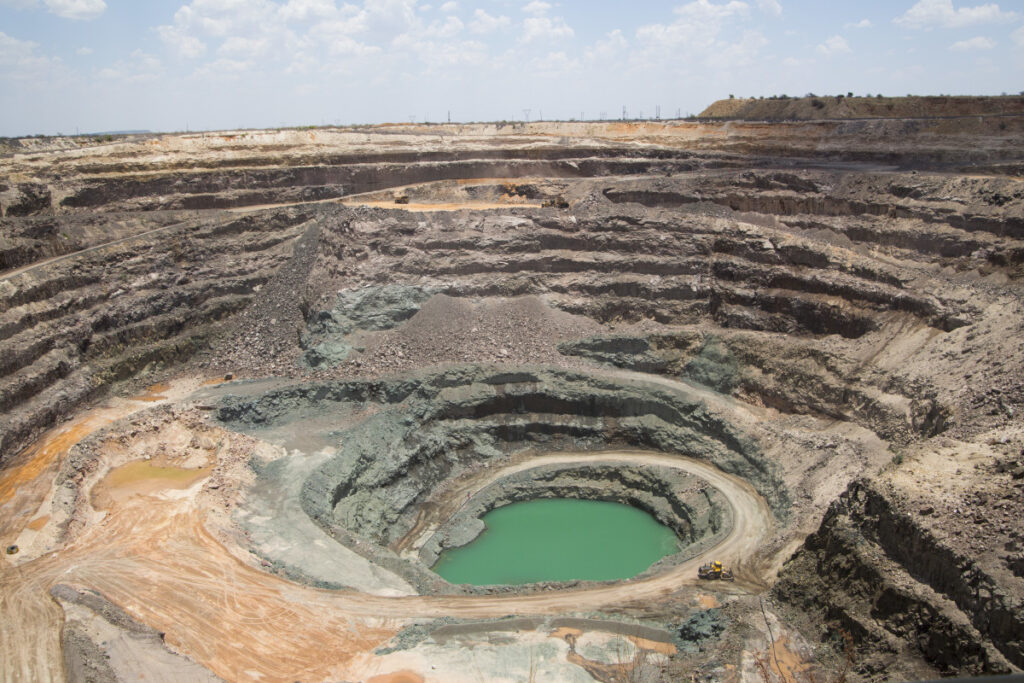When it comes to choosing an engagement ring, many people are concerned about the ethical implications of diamond mining. Traditionally, diamonds have been mined from the earth and have been associated with environmental destruction, human rights abuses, and conflict. However, with the emergence of lab-grown diamonds, there is now an ethical alternative available.
Lab-grown ones are man-made diamonds that have the same chemical, physical, and optical properties as natural ones. They are created in a laboratory using advanced technology, and are becoming increasingly popular among consumers who prioritize sustainability and ethical sourcing. In this blog post, we will explore the benefits of choosing lab grown diamond rings and how they are made in a sustainable way, and the ethical implications of traditional diamond mining.
Benefits of Choosing Lab-Grown Diamonds Over Mined Ones

Source: robbreport.com
Unlike traditional mining, lab-grown production does not involve destructive practices such as deforestation, excavation, and water pollution. Additionally, because they are made in a lab, there is no risk of forced or child labor, which is unfortunately common in many traditional mines.
Another benefit of lab-grown diamonds is that they are typically less expensive than mined ones. This is because the cost of mining, cutting, and transporting mined diamonds is eliminated in the production of lab-grown ones. This means that consumers can get a larger, higher-quality piece for the same price as a smaller, lower-quality mined one.
Furthermore, they offer greater flexibility in terms of color, clarity, and size. Traditional diamonds are limited by the conditions in which they are formed, whereas lab-grown ones can be customized to meet specific preferences. This means that consumers can get a diamond that meets their exact specifications, rather than settling for a mined one that may not meet their expectations.
How Lab-Grown Diamonds Are Made in a Sustainable Way
They are made in a sustainable way using advanced technology. There are two main methods for creating them: High-Pressure High Temperature (HPHT) and Chemical Vapor Deposition (CVD).
HPHT involves placing a diamond seed in a chamber with carbon-rich material and subjecting it to high pressure and high temperature. This causes the carbon to crystallize and form a diamond around the seed.
CVD involves heating a hydrocarbon gas, such as methane, and introducing it into a vacuum chamber. The gas molecules break down and deposit carbon atoms onto a substrate, which eventually forms a diamond.
Both methods require energy and resources, but they are significantly less resource-intensive than traditional mining. In addition, lab-grown ones can be created using renewable energy sources, further reducing their carbon footprint.
Transparency and Traceability in the Lab-Grown Diamond Industry
One of the key advantages of lab-grown diamonds is the transparency and traceability of their supply chain. Unlike traditional ones, which can pass through multiple hands and be subject to unclear supply chains, lab-grown ones are produced in a controlled environment, with a clear origin and supply chain.
Many lab-grown diamond producers have also implemented rigorous tracking and tracing systems to ensure the ethical and sustainable sourcing of their diamonds. This includes providing certificates of origin, ensuring responsible labor practices, and using eco-friendly production methods.
The Human and Environmental Impact of Traditional Diamond Mining

Source: fashionista.com
Traditional mining has been associated with numerous environmental and social issues. One of the most significant issues is the destruction of ecosystems and natural habitats, as mining often involves deforestation, excavation, and water pollution.
In addition, mining has been linked to human rights abuses, including forced labor, child labor, and conflict. Many traditional mines are located in developing countries, where labor laws and regulations may be lax or not enforced.
The diamond industry has made efforts to address these issues through certification schemes and industry-wide initiatives. However, the effectiveness of these efforts has been questioned by some critics, who argue that certification schemes are not rigorous enough and do not go far enough in ensuring ethical and sustainable diamond sourcing.
The Role of Certification in Ensuring Ethical Diamond Sourcing
Certification schemes are an important tool for ensuring ethical diamond sourcing. The two most well-known certification schemes are the Kimberley Process Certification Scheme (KPCS) and the Responsible Jewellery Council (RJC).
The KPCS was established in 2003 to address the issue of conflict diamonds. The scheme requires diamond-producing countries to certify that they are conflict-free and have not been used to fund armed conflict. However, the KPCS has been criticized for its narrow focus and limited effectiveness in addressing other ethical and environmental issues.
The RJC is a voluntary certification scheme that was established in 2005 to promote responsible business practices in the diamond and jewelry industry. The scheme covers a range of issues, including human rights, labor rights, and environmental impact. While the RJC has been criticized for not being rigorous enough, it has made significant strides in promoting ethical and sustainable practices in the industry.
The Cost Comparison of Lab-Grown Diamonds and Mined Diamonds

Source: queensmith.co.uk
As mentioned earlier, lab-grown diamonds are typically less expensive than mined ones. The exact cost difference will depend on a variety of factors, including its size, color, and clarity.
According to a report by Bain & Company, lab-grown diamonds are currently 20-30% less expensive than mined ones. This cost difference is expected to increase as lab-grown technology advances and economies of scale are realized.
In addition to being less expensive, they also offer a greater value proposition for consumers. Because they are produced in a controlled environment, they can be made to order, with specific sizes, shapes, and colors. This means that consumers can customize their engagement ring to their exact preferences, without having to compromise on quality or budget.
Conclusion and Recommendation for Choosing Lab-Grown Diamonds
In conclusion, lab-grown diamonds offer numerous advantages over traditional ones, including ethical and sustainable sourcing, transparency and traceability, and cost savings. By choosing them, consumers can support an industry that is committed to responsible practices and social responsibility.
While traditional diamonds continue to hold a certain allure and prestige in the market, the tide is slowly turning towards lab-grown ones. As consumers become more informed about the ethical and environmental implications of traditional mining, they are increasingly opting for lab-grown diamonds as a more responsible and sustainable choice.
As a recommendation, if you are in the market for an engagement ring or other jewelry, consider choosing lab-grown diamonds over traditional ones. By doing so, you can make a positive impact on the world and ensure that your diamond is not only beautiful but also ethical and sustainable.



















